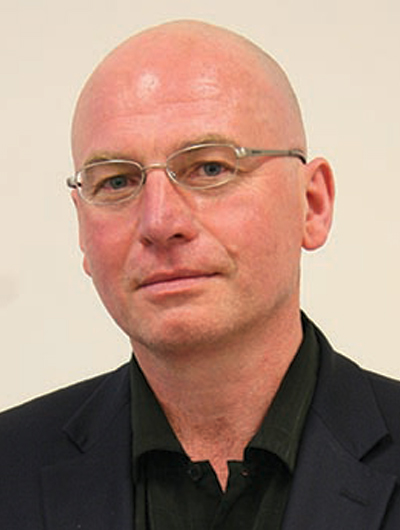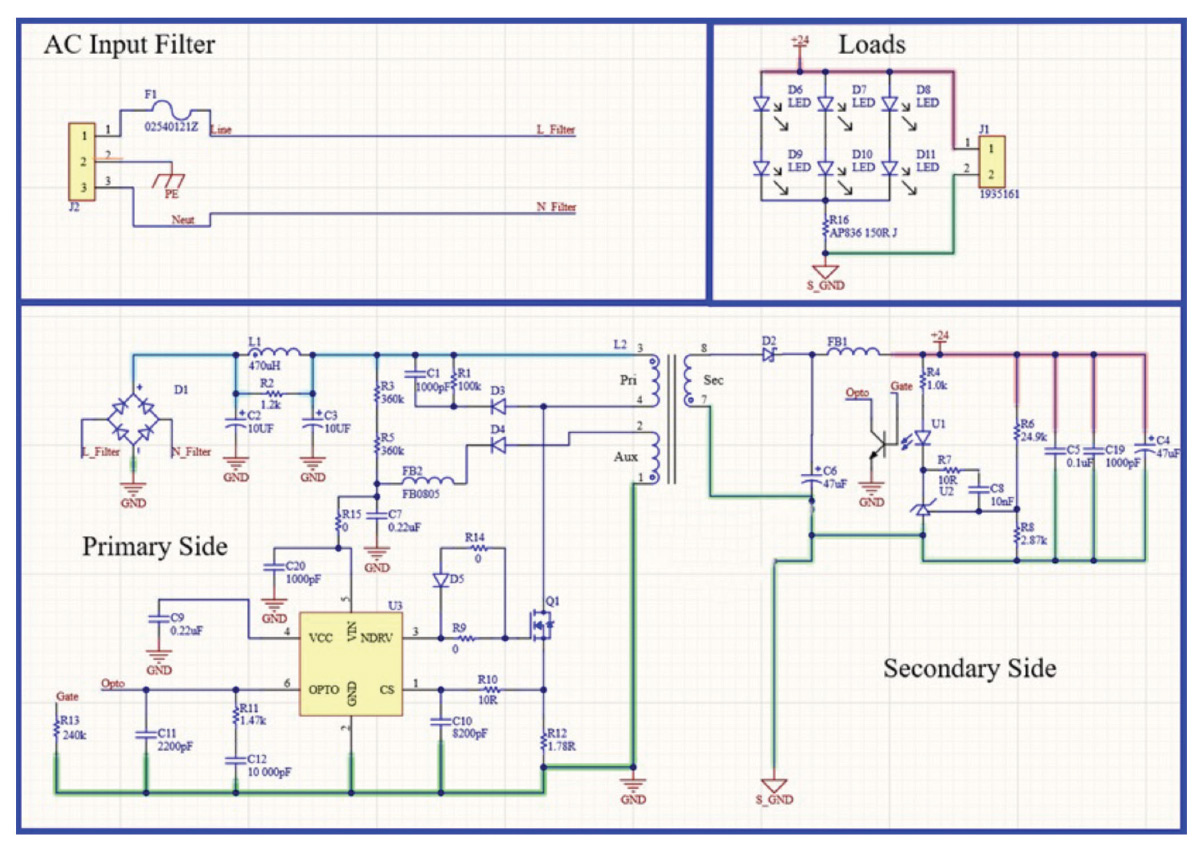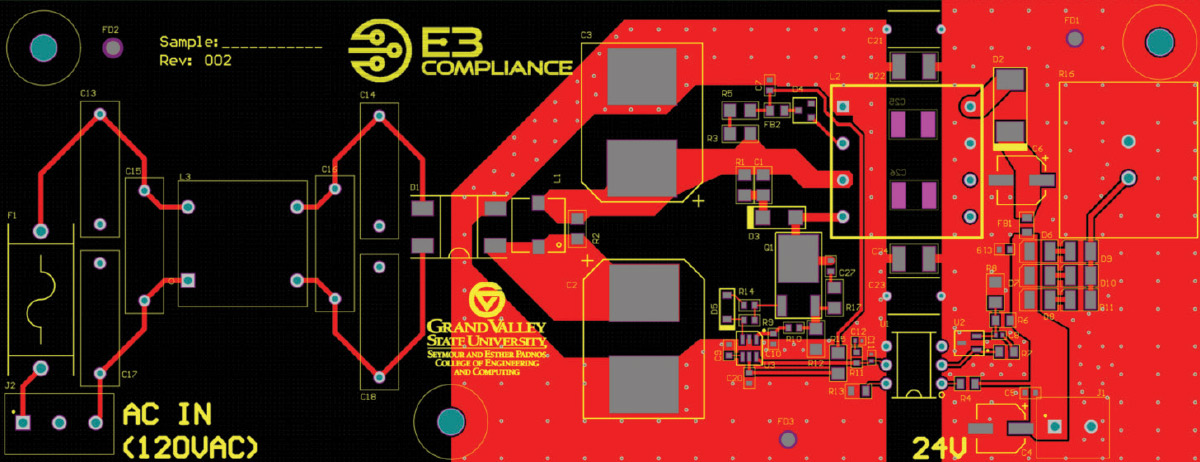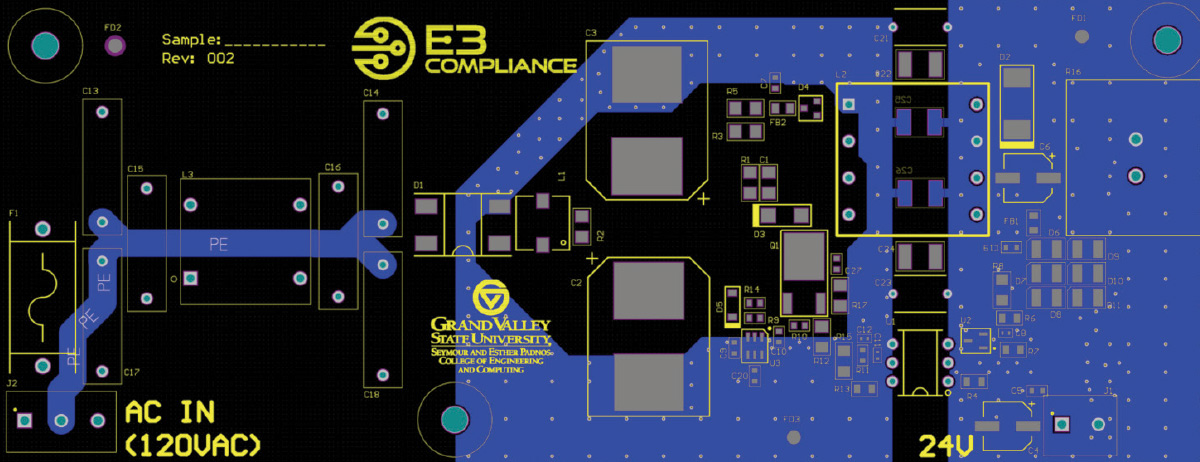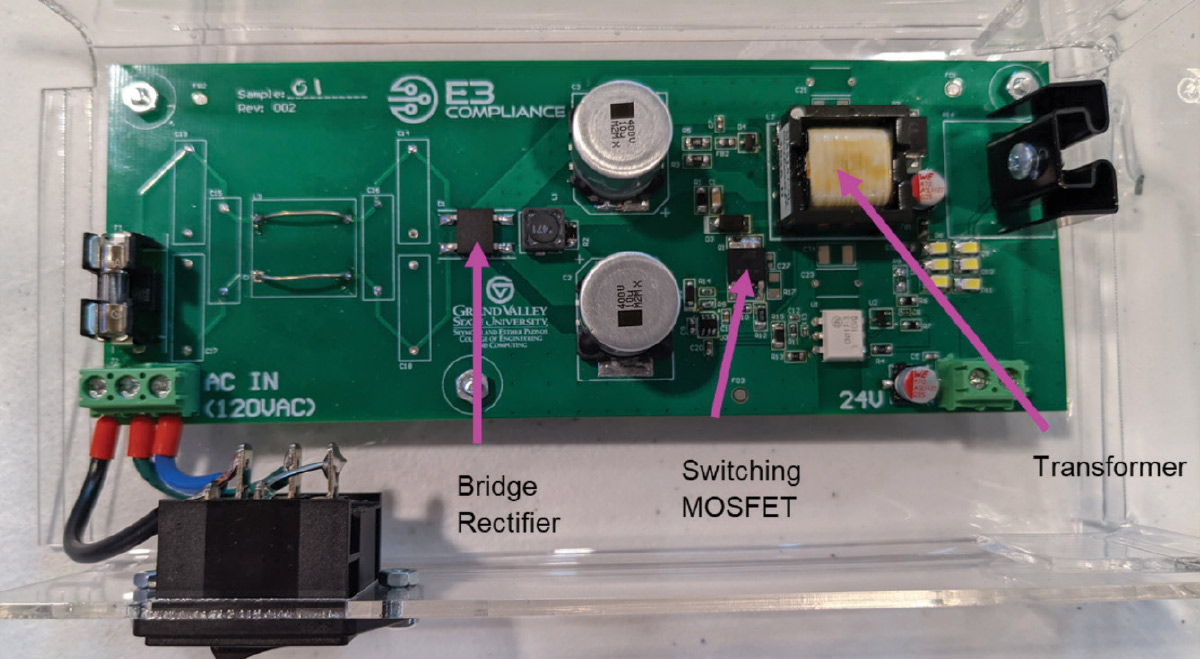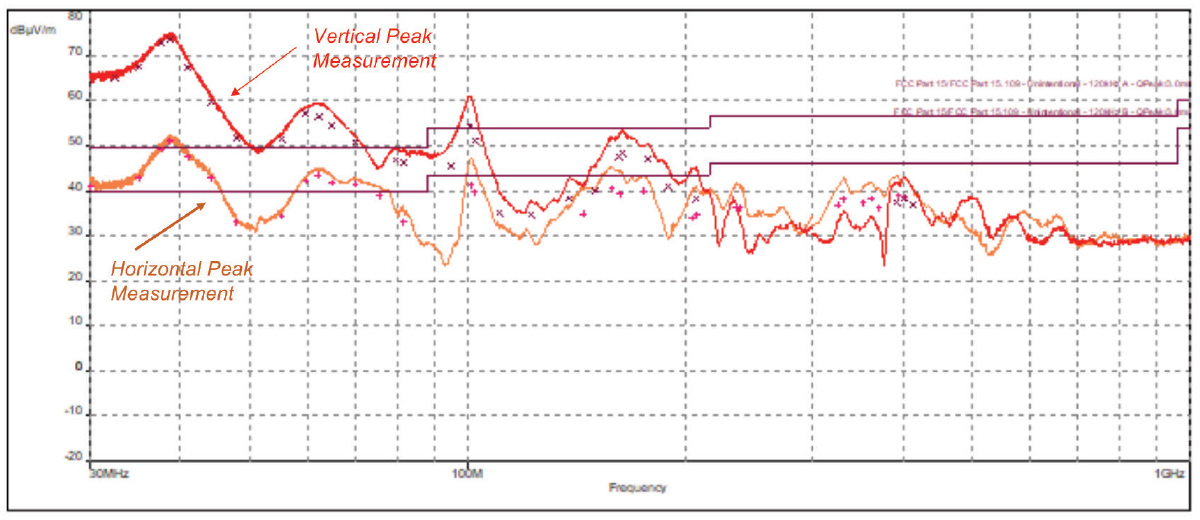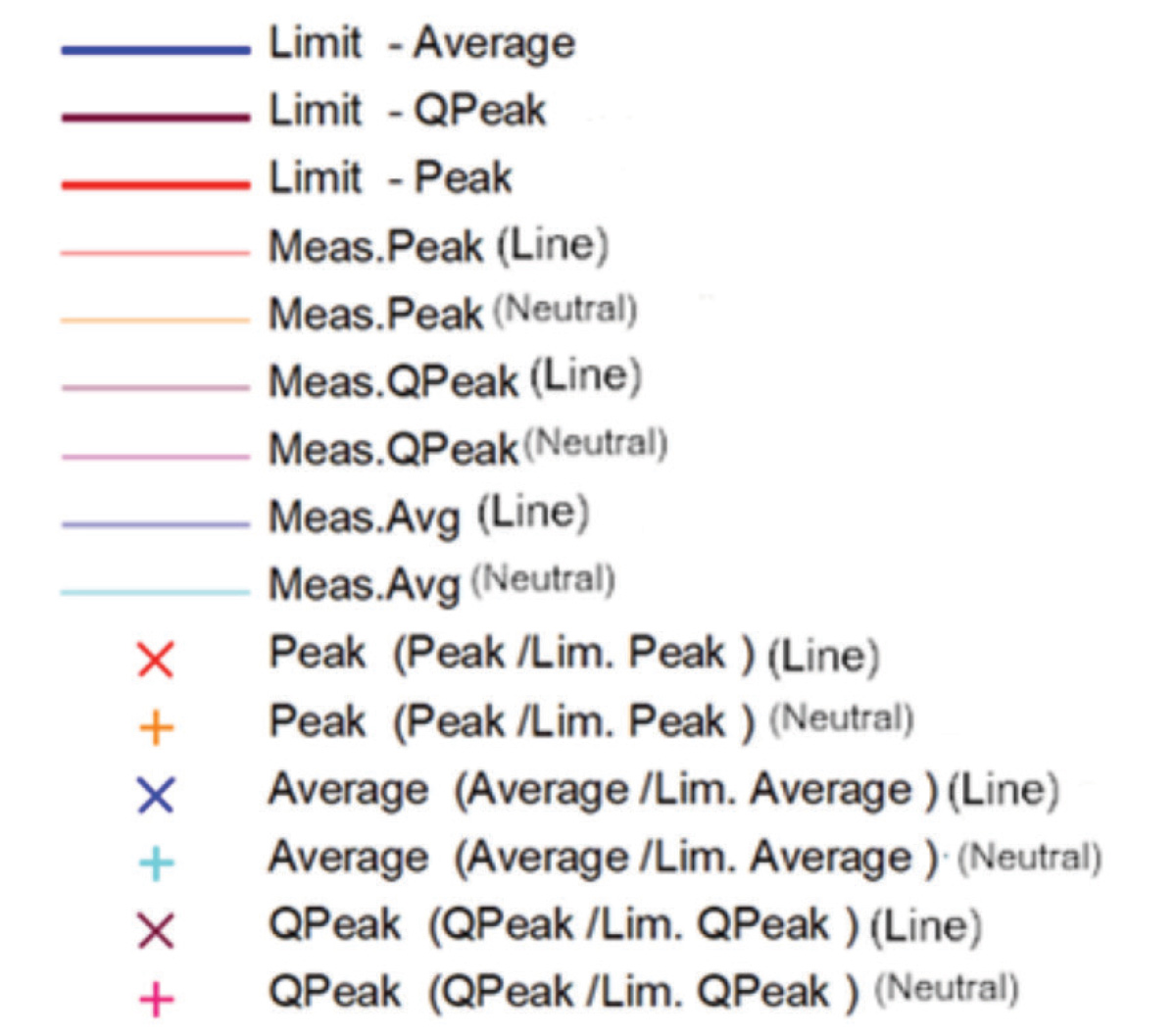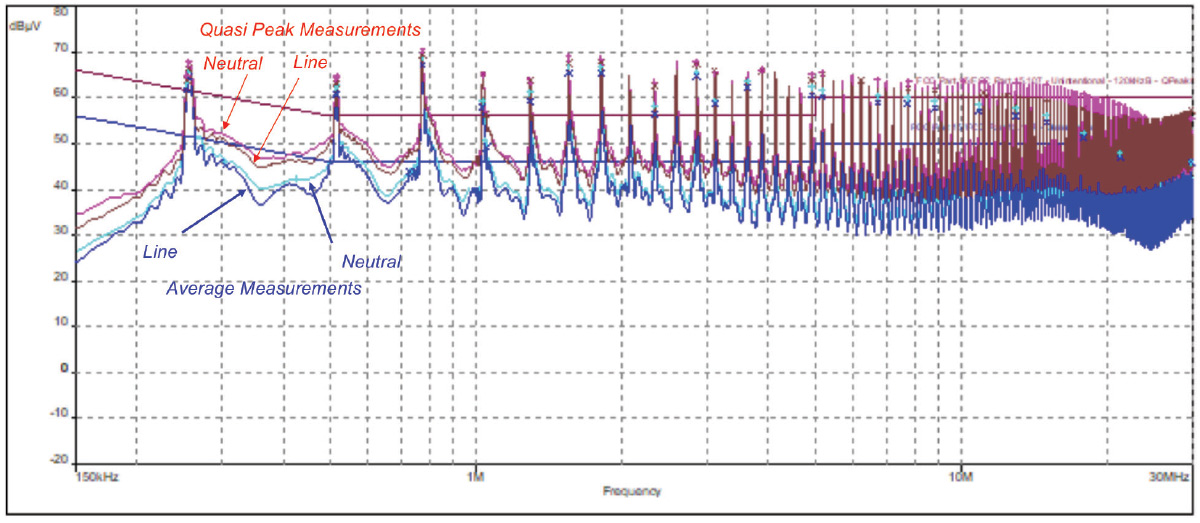his is the eighth article in a series of articles devoted to the design, test, and EMC emissions evaluation of 1- and 2-layer PCBs that contain AC/DC and/or DC/DC converters and employ different ground techniques [1-7].
In this article, we evaluate the performance of the baseline AC/DC converter. The baseline AC/DC converter has only the components needed for functionality and does not have any specific EMC components populated. [7] This configuration will give us a view into what the conducted and radiated emissions issues will be prior to adding components and the cost to specifically address EMC issues. We present the test results from the baseline radiated and conducted emissions tests performed according to the CFR Title 47, Part 15, Subpart B, Class B.
The baseline schematic for the AC/DC converter is shown in Figure 2.
The top layer of the PCB used to create the AC/DC converter is shown in Figure 3, while the bottom layer is shown in Figure 4.
Figure 5 shows the baseline AC/DC PCB converter populated with the baseline components.
This article is organized as follows. Section 2 presents the baseline radiated emissions test results. In Section 3, the baseline conducted emissions results are shown. Section 4 addresses the content of the next article.
A legend for the radiated emissions plot is shown in Figure 6.
Radiated emissions measurements were made using a biconical antenna from 30 MHz – 300 MHz and a log-periodic antenna from 300 MHz – 1 GHz.
As shown in Figure 7, there are numerous failures in the biconical range (30 MHz – 300 MHz). These will be investigated in the next article.
The test results on both the line and neutral, in the frequency range of 150 kHz – 30 MHz, are shown in Figure 9.
The conducted emissions results show multiple failures up to the frequency of 20 MHz. The failures are comprised of the fundamental switching frequency (~ 270 kHz) and the subsequent harmonics. Reducing these emissions will most likely involve front-end filtering components such as a common mode choke, Y-capacitors, and X-capacitors. These will be investigated in the next article.
- Adamczyk, B., Mee, S., Koeller, N, “Evaluation of EMC Emissions and Ground Techniques on 1- and 2-layer PCBs with Power Converters – Part 1: Top-Level Description of the Design Problem,” In Compliance Magazine, May 2021.
- Adamczyk, B., Mee, S., Koeller, N, “Evaluation of EMC Emissions and Ground Techniques on 1- and 2-layer PCBs with Power Converters – Part 2: DC/DC Converter Design with EMC Considerations,” In Compliance Magazine, June 2021.
- Adamczyk, B., Mee, S., Koeller, N, “Evaluation of EMC Emissions and Ground Techniques on 1- and 2-layer PCBs with Power Converters – Part 3: DC/DC Converter – Baseline EMC Emissions Evaluations,” In Compliance Magazine, July 2021.
- Adamczyk, B., Mee, S., Koeller, N, “Evaluation of EMC Emissions and Ground Techniques on 1- and 2-layer PCBs with Power Converters – Part 4: DC/DC Converter – EMC Countermeasures- Radiated Emissions Results,” In Compliance Magazine, August 2021.
- Adamczyk, B., Mee, S., Koeller, N, Evaluation of EMC Emissions and Ground Techniques on 1- and 2-layer PCBs with Power Converters – Part 5: DC/DC Converter – EMC Countermeasures – Conducted Emissions Results,” In Compliance Magazine, October 2021.
- Adamczyk, B., Mee, S., Koeller, N, “Evaluation of EMC Emissions and Ground Techniques on 1- and 2-layer PCBs with Power Converters – Part 6: PCB Layout Considerations,” In Compliance Magazine, November 2021.
- Adamczyk, B., Mee, S., Koeller, N, “Evaluation of EMC Emissions and Ground Techniques on 1- and 2-layer PCBs with Power Converters – Part 7: AC/DC Converter Design with EMC Considerations,” In Compliance Magazine, December 2021.
